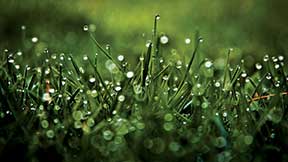Malasree Dasgupta
About 70 per cent of the Earth is made of water. The percentage of water present in the adult human body is not very different. We need water; animals need water; plants need water. Not just our bodies – all our activities need water, from the household to the industries. Water is what keeps us fit and clean. Water-parks and seasides are major tourist attractions. Water channels handle much of our traffic.
This essential substance is naturally available on our planet in three different forms: solid (found as ice sheets and ice caps), liquid (found as water in lakes, rivers, seas, oceans and other water bodies), and gas (found as water vapour in the atmosphere). These forms are studied in physical geography, which deals with all the natural processes that shape the landforms. We are naturally concerned with how well these processes – interacting with the effects of human intervention – maintain the conditions necessary for supporting life on Earth*.
 A teacher of physical geography needs to consolidate her own understanding of these processes and communicate it effectively to students. Maps and diagrams are the most common teaching tools. We begin by studying the physical map of an area (district or state or an entire country) and learning about the major physical divisions – the rivers, mountains, plains, plateaus, etc., and their individual names. Most maps are two-dimensional; they indicate physical features by using colour coding. For example, different shades of brown are used to indicate the variation in altitude, green is used for plains and so on. A child learning about these topics for the first time, finds it difficult to comprehend and retain the coding. Activity 1 suggests a simple method of making a 3D map of India which, once completed, can easily be used in the class for reference.
A teacher of physical geography needs to consolidate her own understanding of these processes and communicate it effectively to students. Maps and diagrams are the most common teaching tools. We begin by studying the physical map of an area (district or state or an entire country) and learning about the major physical divisions – the rivers, mountains, plains, plateaus, etc., and their individual names. Most maps are two-dimensional; they indicate physical features by using colour coding. For example, different shades of brown are used to indicate the variation in altitude, green is used for plains and so on. A child learning about these topics for the first time, finds it difficult to comprehend and retain the coding. Activity 1 suggests a simple method of making a 3D map of India which, once completed, can easily be used in the class for reference.
The complex nature of the physical processes shaping the Earth is hidden from our everyday perception; hence it is difficult to teach these topics at the middle school level. Organizing some activities and experiments is one way to make it interesting and easy for children to follow. Another idea – more usable in certain regions than in others – is to arrange short trips to the nearby riverside or seacoast or caves to allow the students to gain first-hand experience of the landscape. The most important guiding principle of geography at the adult level is its interdisciplinary nature. To inculcate this kind of thinking, it is important to integrate school geography lessons with the rest of the child’s learning. This means:
The author is an educational consultant. She can be reached at malasree.dasgupta@gmail.com.
